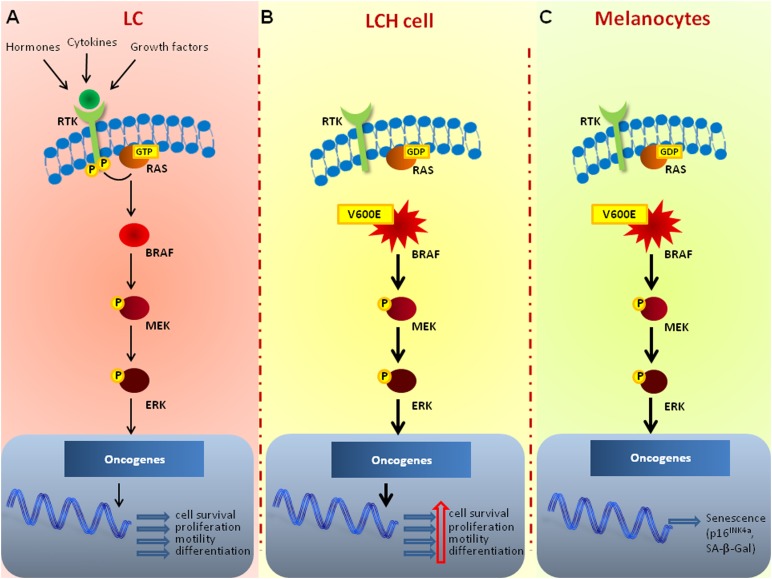Figure 3.
The BRAFV600E mutated protein and its pathogenic role in LCH. (A): In normal LCs, the binding of ligands such as hormones, cytokines, and growth factors to the cell-surface RTK leads to dimerization and autophosphorylation. Activation of RTK induces formation of the active RAS-GTP complex, which binds and activates BRAF that, in turn, triggers the phosphorylation of both MEK and ERK. By altering the levels and activities of nuclear trascription factors, ERK drives the transcription of genes involved in cell survival, proliferation, motility, and differentiation. (B): In LCH, the BRAFV600E mutated gene constitutively activates the MEK-ERK pathway that reinforces cell survival, proliferation, motility, and differentiation. (C): In normal melanocytes, the expression of a BRAFV600E mutated protein can lead to senescence after an initial phase of naevus growth, as confirmed by the intense activity of the stress marker SA-β-Gal and the increased levels of the tumor suppressor p16INK4a.
Abbreviations: BRAF, rapidly accelerated fibrosarcoma isoform B; ERK, extracellular signal-regulated kinase; LC, Langerhans cell; LCH, Langerhans cell histiocytosis; MEK, mitogen-activated protein kinase kinase; RAS, Rat Sarcoma; RTK, receptor tyrosine kinase.

